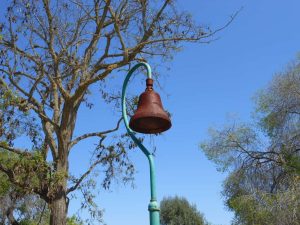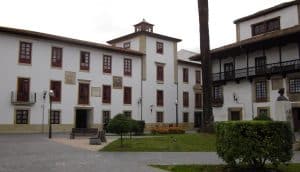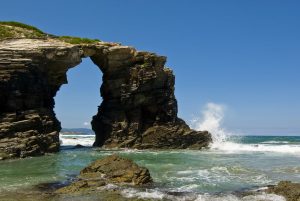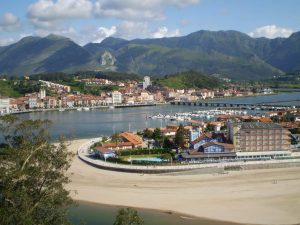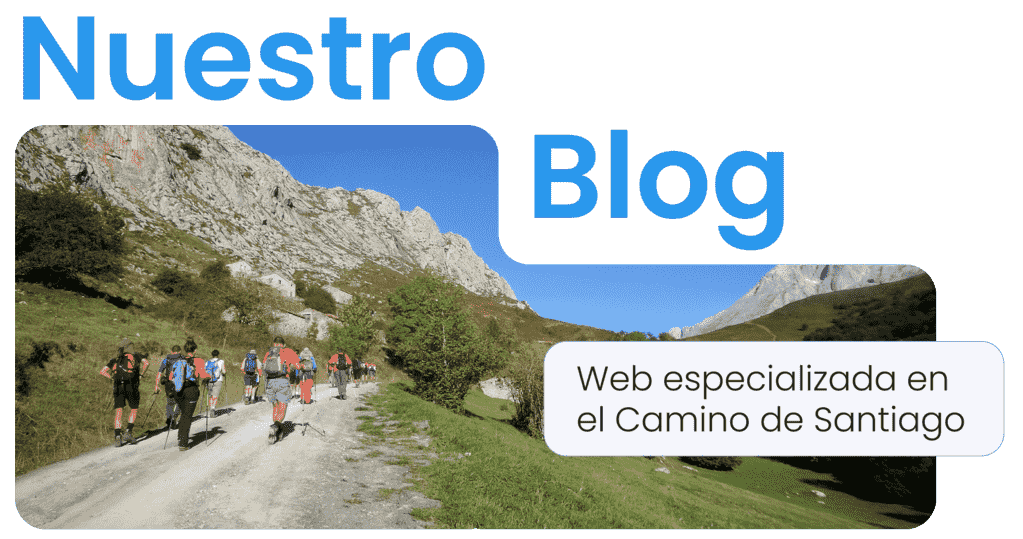
On the shores of one of the most beautiful estuaries on the Asturian coast, Villaviciosa stands as a medieval gem framed by apple trees, history, and hospitality. It is not only the cider capital, but also one of the must-stop points for pilgrims walking the Northern Way to Santiago.
If you are planning to visit this town or make a stop on your pilgrimage route, we will show you what to see in Villaviciosa. We will tell you what not to miss and why this place perfectly combines tradition, nature, and spirituality.
Índice de contenidos
Villaviciosa on the Northern Way: History, Landscapes, and Hospitality
Villaviciosa is an essential stop (both geographically and in terms of importance) on the Northern Way, a pilgrim route that winds along the Cantabrian coastline through mountains, cliffs, and green valleys.
This Asturian town, with its blend of medieval heritage and welcoming spirit, offers pilgrims everything they may need: monuments full of history, authentic gastronomy, and all the warmth of the north.
Located between Gijón and Ribadesella, it welcomes hundreds of walkers each year, who find here the perfect place to rest and reconnect. Before we tell you about its main points of interest, let us explain in a bit more detail why you should choose the Northern Way.
Why Choose the Northern Way?

This route is ideal for those looking for a quieter, less crowded experience in direct contact with nature. In addition, it is probably the route with the richest landscapes.
It starts in Irún, and the early stages are more urban in character. However, the Santiago Way from Bilbao to Santander begins with an initial urban immersion before wandering through beaches and mountains. Later, in Ribadeo Santiago Way, the pilgrim crosses stunning coastal landscapes, towering cliffs, and small Galician villages before finishing their route in Santiago.
Furthermore, compared to the Northern Way, routes like the Tui to Santiago Way offer shorter and more urban routes, ideal for those with less time or seeking a more accessible experience.
In any case, no matter which route you choose, it is always recommended to have the support of professionals specialised in organised Camino de Santiago trips. They offer assistance, backpack transport, and accommodation reservations. The right support makes all the difference at every stage.
Must-See Places in Villaviciosa
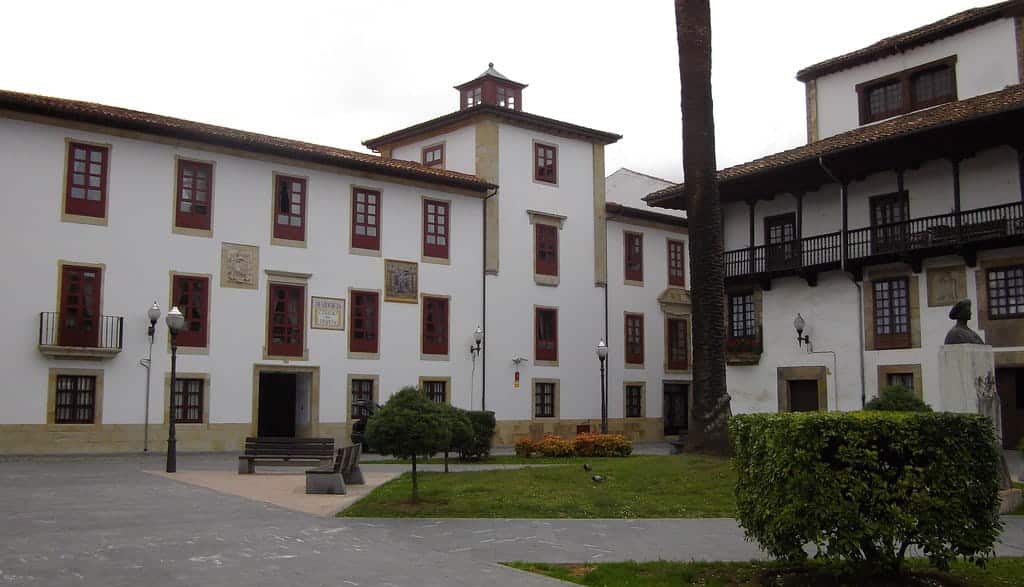
History can be felt in every corner of the historic centre of a town that, no doubt, you associate with cider. But it’s much more than that. Its architecture, cobbled streets, and squares invite you to walk aimlessly, discovering little treasures at every step.
The Old Town and Its Medieval History
Walking through the old town of Villaviciosa is like diving into an urban legacy that has survived the passage of centuries with remarkable authenticity. Its layout follows the model of a town founded in the 13th century by Alfonso X the Wise, with a checkerboard structure still visible in its main streets, such as Calle del Sol or Calle del Agua.
One of the most emblematic places is the Town Hall Square, flanked by noble houses with heraldic shields that testify to the town’s noble past. Nearby, you’ll find the House of the Valdés, with its characteristic wooden corridor, and the House of the Archdeacon, one of the most interesting examples of late medieval civil architecture.
There are also typical Asturian arcades and balconies, with facades combining stone and wood. Walking through these streets allows you to discover corners like the former Pilgrims’ Hospital, now converted into the Graduated Schools Building.
This entire area was declared a Historical and Artistic Complex in 1991, and it maintains a lively atmosphere, with traditional shops, cider houses, and an increasingly active cultural scene.
Church of Santa María de la Oliva
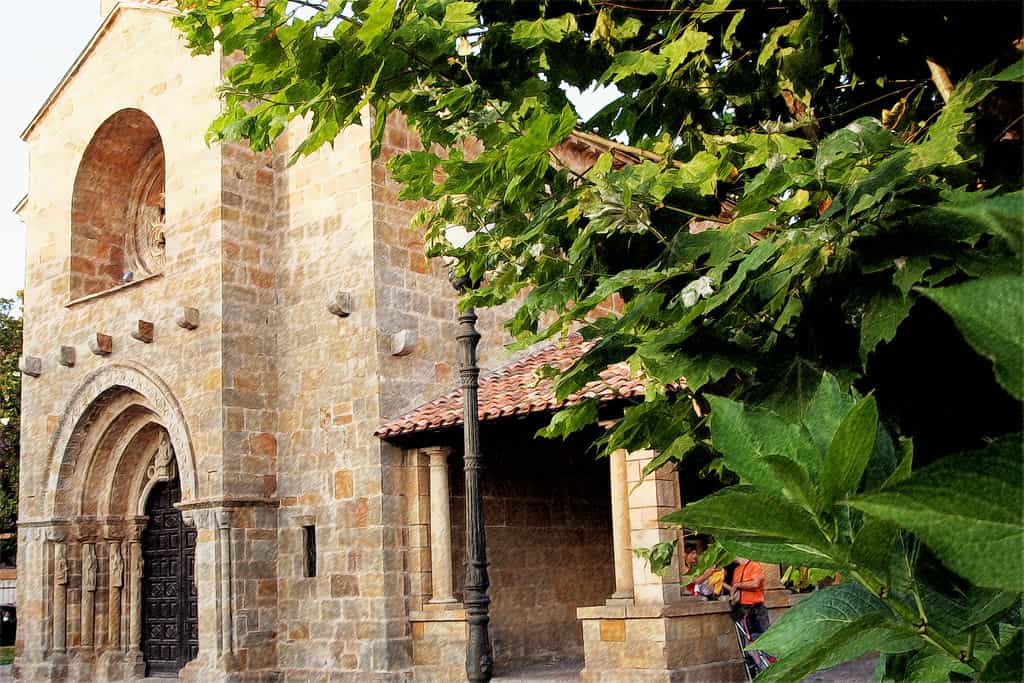
It is one of the most notable Gothic temples in eastern Asturias. Built in the 13th century, its sober exterior contrasts with the symbolic richness of its architecture. Highlights include its western façade with a pointed arch and decorated capitals, as well as its elegant rose window, which allows soft light to enter the interior.
The temple stands on an ancient Romanesque church, and still preserves some elements of transition between the two styles. Its single-nave plan with a polygonal apse and wooden roof reflects a local adaptation of Gothic architecture to Asturian building forms.
The House of Hevia and the Visit of Charles V
Located just a few metres from the Town Hall Square, the House of Hevia is one of the most representative buildings of Villaviciosa’s civil heritage. It is a 15th-century noble house, renovated in the Renaissance period, and is distinguished by its ashlar stone façade, ogee windows, and a noble coat of arms above the portal.
Its historical significance comes from the year 1517, when the young emperor Charles V stayed in this house after landing at the nearby port of Tazones. It was his first stay on Spanish soil, on his way to his coronation as King of Castile.
Today, the building houses the Interpretation Centre of the Villaviciosa Estuary and the Partial Nature Reserve. It also provides information about the emperor himself and his connection with the town. A must-see stop for those who enjoy the living history of places.
Viewpoint of Mount Los Llanos
If you want an unforgettable panoramic view of Villaviciosa and its surroundings, this is the place for you. From here, you can see the estuary, the rooftops of the town, and the endless meadows that surround the village. Ideal at sunrise or sunset, especially if you are a pilgrim starting or finishing your day here.
Nature and Rural Surroundings: The Asturian Essence
Villaviciosa is not just history and architecture. It is also landscape, biodiversity, and direct contact with the land. Its rural surroundings invite you to disconnect, to walk among apple orchards, or to get lost in small villages where time seems to have stopped.
Villaviciosa Estuary: A Natural Sanctuary
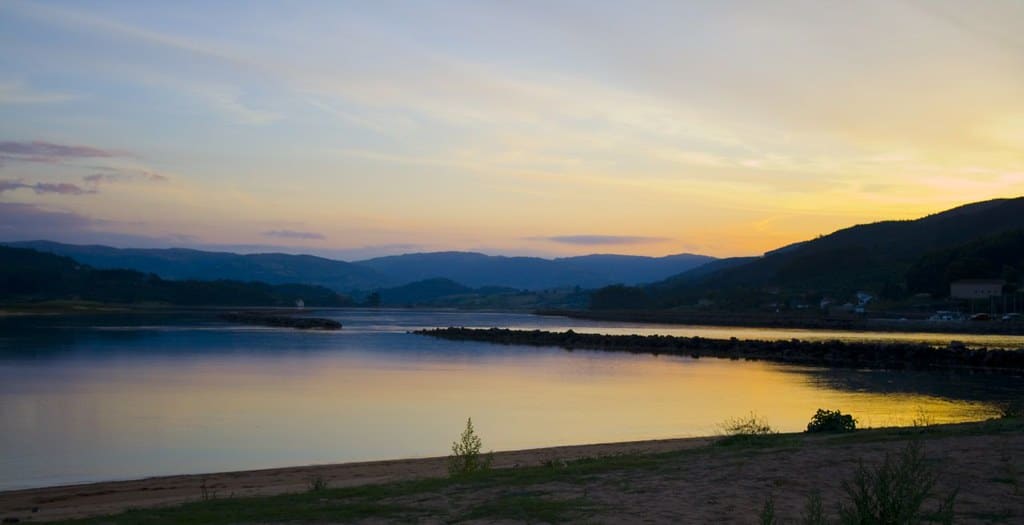
With its more than eight kilometres in length, the Villaviciosa Estuary is one of the best-preserved estuaries in northern Spain.
Declared a Partial Nature Reserve, this area of great ecological value is home to a rich biodiversity and serves as a refuge for more than 150 bird species, many of which are migratory. Herons, cormorants, curlews, and ducks can easily be spotted from various points along the route.
Along its banks, there are marked paths for walking or cycling, such as the route between El Puntal and Rodiles, which allows you to combine nature and coastline.
Walks Among Apple Orchards and Lakes
Villaviciosa would not be what it is without the omnipresent presence of its apple orchards, the apple fields that define the agricultural landscape of the area.
These expanses of fruit trees are not only the source of the famous Asturian cider but also the setting for peaceful walks through rural paths, stone walls, and green meadows. Many of these routes are marked and allow you to visit traditional estates where natural cider is produced in an artisanal way.
Additionally, in the surrounding areas, there are small natural lakes and reservoirs that complement these itineraries, such as the area around La Espuncia or areas close to San Justo and Tornón. These are little-frequented spaces, ideal for those seeking to disconnect, listen to the silence, and enjoy the slow pace of rural Asturias.
Charming Villages in the Surroundings
Parishes such as Amandi, Argüero, and Selorio maintain traditional architecture and a slow pace of life. Here, the traveller finds genuine hospitality, local produce, and landscapes that invite contemplation.
Festivals and Gastronomy in Villaviciosa
One of the best ways to get to know a place is through its festivals and cuisine. Villaviciosa does not disappoint in either of these aspects: living traditions and dishes that nourish both the body and soul.
Apple Festival and Holy Week
The Apple Festival, held every two years (odd years) in October, honours the star product of the area. There are competitions, tastings, artisan markets, and a festive atmosphere that transforms the town.
Villaviciosa’s Holy Week also has a great tradition, with solemn processions and very active community participation.
Cider, Fabada, and Garden Produce
The natural cider is the main feature of the local gastronomy, and in Villaviciosa, you can taste it in its most authentic form: poured in front of you and accompanied by Asturian cheeses, homemade sausages, and fabada cooked slowly over a fire.
Other products like Cantabrian hake, tortos, stuffed onions, and rice pudding complete an irresistible culinary offering.
Villaviciosa is one of those places that surprises visitors and enchants pilgrims. Its streets speak of history, its landscapes exude serenity, and its people welcome you with open arms. If you are planning your route through northern Spain, whether as a tourist or a walker, make this Asturian village an essential stop.
And remember that walking the Camino de Santiago can be an even more rewarding experience if you have logistical support, backpack transport, route assistance, and professional planning.

